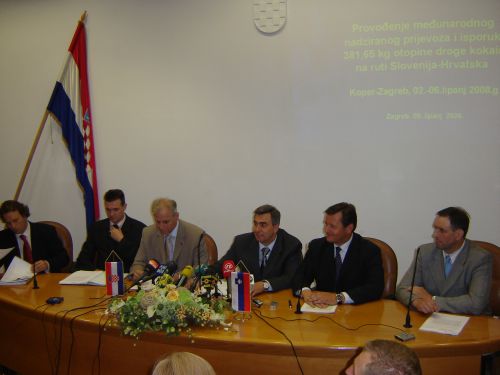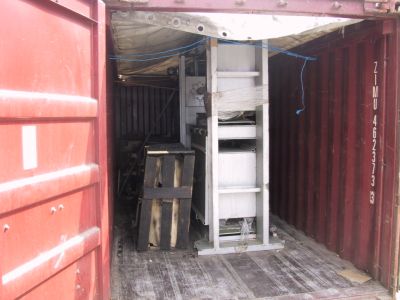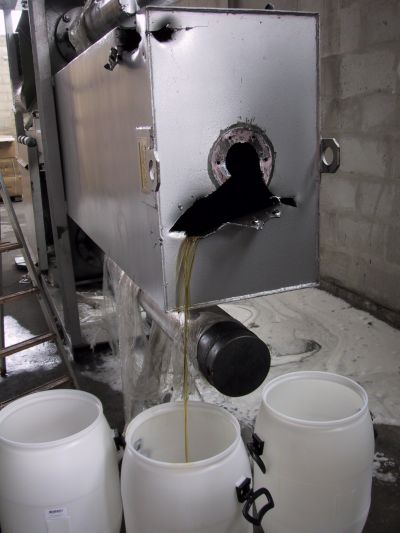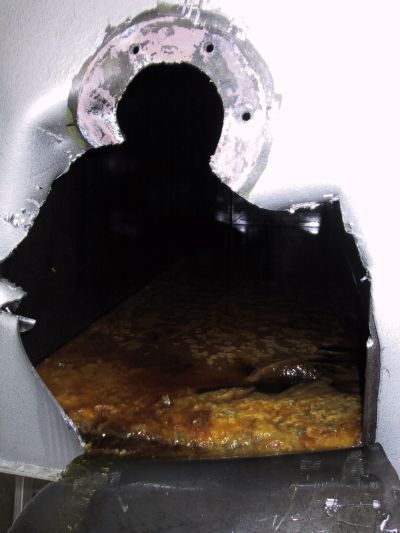At today's press conference, organised by the General Police Directorate and the Customs Office of the RS in cooperation with the Croatian Police, which was held at the headquarters of the Croatian Police in Zagreb, Aleksander Jevšek, Director of the Criminal Police Directorate (CPD); Dušan Rajgelj, Sector for Investigation, General Customs Directorate; and Ivan Nadž, Deputy General Director of the Croatian Police, presented the operations for seizing a large amount of the illicit drug cocaine at the port of Koper.

According to their statements, on 2 June 2008, following a previous risk analysis at the Port of Koper, the officers of the Koper Customs Office located and inspected a container which had arrived at the port by cargo ship from Colombia. It contained declared legal goods - a press and compressors addressed to a Croatian customer. The inspection of the shipment carried out by the customs officers revealed that the hydraulic oil reservoir contained a suspicious white substance mixed with solvents, with a gross weight of 381.65 kg. On the grounds of suspicion of the presence of the illicit drug among the mixture of solvents, the Koper Criminal Police Department entered the investigation.

Preliminary tests performed on the mixture gave reason to suspect that it contained dissolved cocaine. The competent state prosecutor of the Koper District State Prosecutor's Office and the competent investigating judge of the Koper District Court were informed of the detection of the illicit drug. The suspicious liquid, namely the mixture of solvents and cocaine, was pumped from the tank into barrels and transported to the Forensic Science Centre at the General Police Directorate, where the substance is being analysed. In all, 302.05 kg of liquid and 79.60 kg of a thick white substance were pumped from the hydraulic oil reservoir. According to the assessment of Forensic Science Centre experts, the described mixture of solvents contains between 80 and 100 kg of dissolved cocaine. The precise quantity will be revealed after the expert analysis has been concluded.

The inspection of the documentation of the above shipment revealed that a company from Croatia may be involved in smuggling cocaine. By way of the instructions issued by the Koper District State Prosecutor's Office, the Croatian security and judicial authorities have been informed of the findings. On 6 June 2008, two Croatian citizens, aged 40 and 38, were arrested in Zagreb as a result of a coordinated international police action. Both are reasonably suspected of being involved in the smuggling of the seized cocaine. In compliance with Croatian legislation, they were detained and the following day brought to the hearing before the investigating judge of the County Court of Zagreb, who ordered custody for both.
 |
 |
Price of cocaine on the illegal market
On the Slovenian illegal market, the price per kilogram of cocaine ranges between EUR 40,000 and 45,000. The retail selling price for Slovenian cocaine consumers, i.e. per gram of the illicit drug, reaches EUR 60 on average. On the basis of these prices, the value of the cocaine seized at the Port of Koper amounts to between EUR 4 and 4.5 million in "wholesale" and around EUR 5 million "retail". In the European Union, the price for one kilogram of cocaine usually ranges between EUR 30,000 and 50,000.

Similar case of drug trafficking from 2007
In August 2007, a similar case of cocaine smuggling was dealt with and investigated by the Slovenian Criminal Police in cooperation with the officers of the Koper Customs Office. A container was sent from Ecuador through the Port of Koper, addressed to a recipient in The Netherlands. The inspection revealed 40,125 kg of cocaine, which was then seized. The drug was sealed in 37 packets, concealed among legal customs goods.
Statistics
The rising trend in the quantity of seized cocaine since 2005 is distinct:
- in 2005 2,140 g of cocaine were seized
- in 2006 4,670 g of cocaine were seized
- in 2007 41,749 g of cocaine were seized
- in the first five months of 2008, 2,230.11 g of cocaine were seized
The operating data known to date indicate that cocaine is smuggled from the Benelux countries, particularly from the Netherlands, partly also directly from Spain, through Italy.
General information on the smuggling of cocaine:
The European Union is the second largest global market in cocaine. Cocaine comes from Colombia, Venezuela, Ecuador, Brazil, the Antilles and Argentina. It is smuggled into the EU via Spain, The Netherlands, Great Britain, France and Italy.
Cocaine smuggling from South America via Africa passes Senegal, Guinea, Sierra Leone, Liberia, Côte d'Ivoire, Ghana, Togo, etc. The most frequently used means of transport is fishing vessels. The crew generally consists of nationals from African countries, while some of them are Spanish and South American. The quantity of smuggled cocaine ranges between 400 and 3700 kilograms. The cocaine is discharged in warehouses in African countries and prepared for further smuggling towards Spain (by ship or plane).
The smuggling is supervised by Latin American or African nationals, along with those from Europe and South America. The detected shipments indicate that quantities sometimes exceeding 2,500 kilograms are involved in such smuggling activities. The discharging is performed in the northern coastal zones of Portugal and Galicia. The seizures of shipments were executed mostly in the Mediterranean Sea (TITIBAT - 2,434 kg, YKNOT and BALULA 833 kg). The seizure in Galicia amounted to 1,700 kg, at Gibraltar 1,800 kg, in the south of Cape Verde 1,300 kg.
Smuggling of cocaine on sailing ships in the territory of the Canary Islands has been detected as well. The route passes between the French Riviera and Cape Verde. Intersection with the route of the fishing vessels sailing from Cape Verde towards the French Riviera - Madeira corridor is possible. Within this territory, cocaine is smuggled on sailing ships across the Canary Islands. The sailing ships carry European flags, and the crew is of European origin as well. The cocaine is loaded from mother ships sailing from South America or the African coast. The quantities of thus smuggled cocaine amount to approximately 500 kg; however, sailing ships carrying more than 2500 kg of cocaine also appear. The discharging of cocaine is done on the Canary Islands or the Iberian Peninsula.
The problems related to the discovery of smuggling from Africa are often the following: limited or non-existing police control in Africa, difficult cooperation with African countries ignoring operations, illegal immigration and smuggling of technical devices, and the operations of Colombian groups in several countries. It is difficult to find reliable contact persons within their police forces. There is a lack of anticipation skills in Europe, ignoring new routes and difficulties in cooperation between the police and customs offices in Africa, and comprehensive and complex investigations are not established against criminal communities in Africa.
A number of criminal communities which smuggle cocaine from South America are linked. The Colombians are connected to the nationals of Mexico, Spain, Morocco, Senegal, Ghana and Togo. Colombian criminal communities are connected to the Mexican cartels. The Colombian organisers provide for the delivery of cocaine to Panama and to Mexican criminal communities. Criminal communities of Brazil, Lebanon and Nigeria form part of the cooperation network as well. The exchange of Brazilian cocaine for ecstasy takes places in Belgium and in The Netherlands. The Brazilian criminal communities, which operate within the territory of Paraguay, are involved in the smuggling of arms from the EU, which they trade for cocaine.

